#bmw overheat
Text

If your BMW engine temperature is creeping up at idle, don’t take it for granted. Get to the bottom of the problem before things take a turn for the worse. For more info, please go through the above discussion.
0 notes
Text

The heating system is the least used part in your BMW but is one of the most crucial ones when it comes to driving in the biting cold winter months. However, like other mechanical parts, the heating system encounters several issues with its functioning that can make it very difficult for you to drive the car with ease. Have a look at the infographics to learn the ways to troubleshoot the problems affecting the heating system of your BMW.
0 notes
Text

Overheating poses severe risks to your BMW's engine. It can lead to critical issues such as head gasket failure, fractured hoses, warped cylinder heads, and even a cracked engine block, necessitating expensive repairs. Immediate action, including checking coolant levels, radiator maintenance, and professional servicing, is crucial to prevent catastrophic damage.
0 notes
Text
5 Signs to indicate that Your BMW Cooling System is failing

Every car produce heat during running due to various operations going on in the car. But too much of heat is dangerous for vehicles because the car components would not be able to bear such a large amount of heat and they get wear and tear. This is more likely to happen during summer season. So the car uses a cooling system to cool the vital parts. But many cars including BMW get some issues at the cooling system. So how important is the cooling system and what are various symptoms of a bad cooling system in BMW is what I’m gonna discuss here.
How cooling system is important?
As you all know how important an engine for a vehicle is. In motor vehicles, the engine is the one which converts the chemical energy from fuel to mechanical energy to make the wheels rotate. Without engine, you cannot make the vehicle run. So this important part of the engine also needs more maintenance and care. Any problems in the engine can create serious problems.
One of such problem is the overheating of engine. Overheating occurs when the engine gets a high amount of heat but cannot release heat outside. So more and more heat produced at the engine remains in it and starts to damage many vital engine parts. This generally occurs during the summer. So a system is used to cool the engine or to bring such a temperature to the engine where it can operate efficiently without getting damaged. The cooling system uses a fluid called coolant or antifreeze to make it circulate through the engine and absorb the heat from it. This heat is released outside. The cooling system even prevents making engine too cold, because if the engine becomes too cold, then the combustion process may not occur properly.
Cooling system helps the engine in performing better and it also gives the engine a longer life. Issues at the engine generally requires more money for diagnosis.
The cooling system consists of radiator, reservoir and overflow tanks, water pump, radiator fan, thermostat and some hoses and gaskets. Coolant is stored in the reservoir and the extra amount of coolant is stores at the overflow tanks. The water pump supplies the coolant to the engine by giving pressure to it. The coolant flows to the engine. The thermostat then regulates the amount of coolant to enter into the engine. The coolant gets into the engine by hoses. After completing flow through the engine, the heated coolant flows to the radiator where it gets cooled by the radiator fan. The gaskets seal the cooling system so that pressure would be maintained and coolant would not leak out. So when the cooling system gets some issues, then it’s due to damage of any of these components of the cooling system.
Signs of bad cooling system
A bad cooling system cannot perform its work. Most of the times it leads to issues in engine. You have to know about the symptoms or the signs of the bad cooling system you may get in BMW so that your car get it fixed in right time. Here are some common signs.
Engine overheating warning
If the cooling system is having some faults then it would fail to cool the engine, hence the engine would overheat. You can get to know about it by the help of engine temperature gauge or engine overheating warning light at dashboard. The gauge would point to the H or a red zone to show engine overheat.
Coolant leaks under car
Loss of coolant due to damage in gaskets, hoses or water pump can make the coolant to leak out during circulation. So you may find puddles of green colored fluid having a sweet smell under the car while parked.
Smoke from hood
You would find a white smoke coming out of the car. Sometimes people do mistake in considering the steam coming out of hood during monsoon as white smoke. The white smoke may produce a sweet smell. It is a sign that coolant is leaking internally.
Smoke from exhaust
Sometimes, the coolant escapes into the cylinders and burn with the fuel to produce a white smoke. This occurs due to damaged heat gasket. You may notice a white smoke from exhaust when the car engine is on.
Damaged parts
For other signs, you can inspect the cooling system. If you find that the gaskets, or hoses, water pump are damaged. Then you have to replace those parts or else the engine would overheat.
Conclusion
To prevent the engine from severe damage, checking and diagnosis of cooling system is very important. Do not take risks by driving your car for mare time while cooling system is failing. Get your BMW diagnosed at your dealer for best results.
0 notes
Photo

For the smooth combustion process in the internal combustion engine, the engine needs three important things such as compression, the proper mixture of air/fuel, and the spark. When any of the components are missing in the engine, the combustion process of the cylinder is affected and causes many issues. The following infographics defines the causes behind the engine of your BMW misfiring.
https://www.pinterest.com/pin/629659591675459969
0 notes
Photo

If your BMW is smoking under the hood but not overheating- that's not normal... Don't ignore it. Contact a car mechanic as soon as possible so that the exact problem can be identified and rectified.
https://visual.ly/community/Infographics/business/why-my-bmw-smoking-not-overheating-what-should-i-do
0 notes
Text
5 Signs Your BMW Water Pump is Messed Up
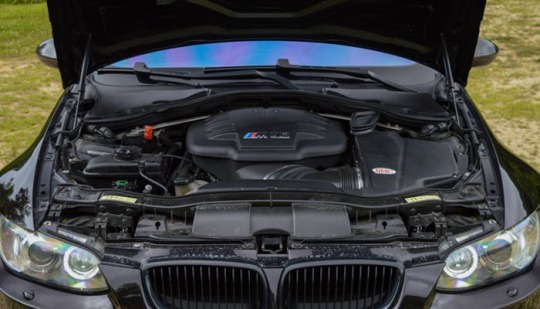
Pumps are used to make the supply of fluids from their storage place to the place of use. Pumps are therefore very much useful in cars because of the use of various fluids. These fluids have a great role in making the car run safely for long. So these fluids even need more attention. Many of the problems in car arise due to the fluids. Fluid used are the fuel, engine oil, coolant, gear oil, steering fluid and brake fluids. In this article, you will know about the failing water pump and all its signs.
What causes water pump to fail?
Water pump supplies coolant to the engine. If the water pump is faulty, then the engine would get many temperature issues. Failure of the water pump can lower the pressure of the coolant in the cooling system. The coolant would not pass to the engine in sufficient quantity and hence fails to cool the engine. An engine needs to be in a perfect temperature where it can be operated easily without damaging its parts. During hot weathers, the engine tend to get heated very quickly, so it needs more supply of coolant to it. If the water pump fails to supply more coolant to the engine then the engine would overheated easily.
Worn bearings
Worn gaskets
Corrosion in the water pump
Common symptoms of water pump failure
If your water pump in your car is messed up then you will get various symptoms of it. You have to diagnose the water pump or else your car would be in great trouble. So you need to look for the symptoms to know if your water pump needs to be diagnosed or not.
Leaking coolant
You see fluid, mostly of green color or sometimes of red color under the center front region of your car, then your water pump might be leaking coolant. The water pump consists of many gaskets which can lead to leakage of the coolant when damaged or worn. Leaking of coolant from the water pump cannot maintain the pressure of the coolant and a lot of coolant can get lost from the cooling system of the car when the pump runs.
Winning noise
A high pitched harmonic noise comes out from the front part of the car is a good sign of bad water pump. It is a whining noise of high pitch. It is produced from the pulley of the pump when it rotates if it has the problems in its bearing or it is not properly installed. Whining noise from the front is a good sign of failing water pump. Failing of the bearings or the whole pulley cannot make the water pump to operate well.
Rusts in water pump
Corrosion at the impeller and the pressure plugs can make the water pump faulty. The rusts can damage the other parts in the cooling system. Rusts can make the water pump ineffective.
Engine getting overheated
When the engine gets overheated, it’s mainly because of the low coolant in the engine. Low pressure of the coolant cannot stop the overheating of the engine. This is due to the faulty water pump. You will see the temperature gauge of the engine is rising to the red zone.
Steam from the hood
If there is steam coming from the hood when the hood is lifted, then know that the engine is overheating and there is some problem in the coolant system, mostly in the water pump. A faulty water pump cannot make the proper flow of coolant to the engine due to which the engine would be overheated.
Holes on the water pump
At the coolant inlet of the water pump, the bubbles in the coolant is formed which implode and lead to holes in the water pump. Even at the dry side of the water pump, the holes are seen that make the problem in the operation of the water pump. By inspecting the dry side, you can get this sign.
Conclusion
If you have problem in the water pump, you get the signs of it, then take your car to the auto repair center for any repairs or replacement of the water pump.
#bmw car#car engine overheat#car coolant leakage#car coolant change#car engine service#car water pump#car water pump service
0 notes
Text
5 Signs Your BMW Timing Chain Tensioner Has Gone Bad From Certified Mechanics in Apex

There are many components in your BMW that play a crucial role in the smooth running & better performance of the car. However, people know very little about these parts & the way they help other important parts in their efficient functioning.
One such extremely important part of your BMW is the timing chain tensioner that is located under the hood of your car and helps the other component including the engine to function without any hindrances. Moreover, the timing chain tensioner prevents premature failure of the water pump and alternator.
Nevertheless, being a mechanical component the timing chain tensioner is itself prone to several issues and eventually fails, rendering your car impossible to drive. Here in this article, we will discuss the top 5 signs associated with timing chain tensioner failure shared with us by the certified mechanics in Apex.
Unusual Noises
One of the prominent signs associated with timing chain tensioner failure is related to unusual noises coming from under the hood of your car. BMWs are known for their smooth running & there are seldom any instances where you are going to hear any abnormal sound other than the roar of the engine.
However, if the timing chain tensioner is faulty, then you are going to face a host of issues and hearing unusual noises in the form of knocking or buzzing sounds is quite common for drivers. These type of sounds is caused due to a loose timing chain that collides with the other moving parts under the hood of your vehicle.
The moment you get to hear any of these sounds, then you should immediately take your BMW to a certified repair shop where a qualified mechanic can look into the issue.
Misfiring Engine
The engine of your high-end car is the nerve center of the whole car & its efficient functioning is something that should always be the top priority of every driver. Generally, the engine of your BMW is seldom going to face any issues of its own, however, it does get into trouble whenever the components connected to it face problems.
This is where a malfunctioning timing chain tensioner should grab your attention. Because it is seen that whenever the timing chain tensioner goes bad, the engine misfires. Initially, the timing chain tensioner starts to get loose and this is when you will experience engine misfires in your vehicle while driving.
As the timing chain is a very important part in the sense that it helps other components like the camshaft & the crankshaft to function properly and also supervises the functioning of the spark plugs, its failure throws everything off balance leading to the spark plugs firing at the wrong time causing an engine misfire.
Starting Issues
Whenever the timing chain tensioner in your high-end car goes badly, you are going to face starting issues in your car. During the initial days of its malfunctioning, the engine will crank but not start or will shut down immediately upon starting.
However, if the timing chain is already broken, then the engine won’t start at all. The starting process of your car is a very complex one and a lot of components starting from the camshaft to the spark plugs are directly or indirectly involved in starting the car.
The timing chain tensioner is responsible for synchronizing all the actions so that your luxury car starts without a hitch. However, issues with the timing chain can cause starting difficulty for your vehicle.
Presence of Metal Shavings
Now, it is definitely a cause of concern when you observe the presence of metal shavings in the engine oil of your BMW. Most of the time this is caused due to breaking up of the timing chain tensioner and small pieces of metal find their way into the oil pan of your BMW.
While changing the oil of your BMW if your mechanic tells you that there are pieces of metals in the oil, then you must immediately ask him to inspect the timing chain. The small pieces of metal in the oil signify that the timing chain is on the verge of complete failure & needs to be replaced.
Illuminated Check Engine Light
The check engine light located on the dashboard of your high-end car acts like a warning light that illuminates whenever there is something wrong in your vehicle. The failure of the timing chain tensioner can also cause the check engine light to illuminate.
Nevertheless, the problem with the check engine light is that it can come on due to a host of other issues & without advanced diagnostic tools it is very difficult to pinpoint the exact source of the problem.
Finally
The above-discussed factors are some of the leading signs associated with the failure of the timing chain tensioner in your high-end BMW. Now, you can easily avoid getting into trouble due to the bad timing chain tensioner, if you are proactive in following the manufacturer-recommended maintenance schedule of your car.
#bmw cars#car timing chain#car check engine light#car timing chain repair#car engine service#car engine overheat#car engine problem
1 note
·
View note
Photo

Engine overheating in a car could indicate anything from a faulty thermostat to a broken radiator. Plus, a drop in oil and coolant levels can also result in engine overheating in a car. If your BMW is running hot, figure out what's wrong with it as soon as possible.
https://www.pinterest.com/pin/590253094931488760/
0 notes
Photo

BMW is one of the most sought-after luxury cars in the world that is known for its performance. The engine of your BMW plays a crucial role in the top performance of the car. However, the internal combustion process produces a lot of heat and if it is not managed properly, then it can lead to overheating of the engine in your BMW. There are certain parts in your BMW that need to be inspected whenever the engine overheats. Have a look at the infographics to know the parts in your BMW that needs to be inspected when the engine overheats.
https://www.pinterest.com/pin/1024780090187236897
0 notes
Text
Expert Solutions for BMW Overheating At Idle: A Step-By-Step Guide

If you think that getting stuck in traffic is the worst thing that can happen to a person, then you are mistaken… Being stuck in traffic with an overheated engine would be the worst case situation. So, what should you do if you find yourself stuck in such a situation? That’s what we will discuss in this blog post… Hence it is suggested that you read this blog post in its entirety.
BMW Overheating At Idle: Known Reasons
If you notice an increase in engine temperature while idling your BMW in traffic, it's a clue that something isn't quite right with your car. Many factors could be at play if your BMW overheats while you leave it at idle. Some of the most obvious ones are listed below, please take a look;
Likely culprit #1- Faulty radiator fan
More often than not... radiator fan failure is to blame if your BMW engine overheats at idle. The radiator fan, after all, is what kicks into action when the car is idling and blows away the heat that the coolant has absorbed from the engine. So, obviously… if the fan malfunctions, your car engine temperature will skyrocket; especially when idling or in stop-and-go traffic. So, if your BMW engine temperature is rising at an alarming rate at idle, the first component you should check is the radiator fan.
Likely culprit #2- Radiator is clogged
A clogged radiator is another reason why your BMW engine temperature could soar at idling. The radiator essentially serves as a conduit via which coolant flows to release the heat it has absorbed from the engine onto the atmosphere. If it gets clogged up, coolant circulation will get disturbed. As a result, the engine will overheat; especially when the vehicle is at idle. To fix the issue, you’ll need to unclog the radiator. If that’s not possible, you will need to replace the entire radiator unit.
Likely culprit #3- Defective thermostat
The thermostat plays an important role in keeping your vehicle's engine temperature under control. You can think of it as a valve that essentially regulates coolant circulation between the engine and the radiator. If for some reason it starts acting up, coolant circulation between the engine and the radiator will be adversely impacted. This may contribute to a rise in engine temperature when you are driving in a stop-and-go traffic or idling. That's why it's important that you calibrate your BMW's thermostat from time to time.
Likely culprit #4- Declined coolant level
This is yet another reason why your BMW engine temperature gauge may begin to turn red. The coolant is the thing around which your vehicle’s entire engine cooling system revolves. It passes through the designated passageways to collect heat produced by the engine, then it flows to the radiator to dissipate that heat into the surrounding air. If coolant level declined because of an internal or external leak or it gets contaminated with dust, debris, and other foreign elements, the cooling system will lose its efficiency.
Likely culprit #5- Water pump failure
Coolant must be continuously pumped in order to maintain the engine temperature within acceptable limits. There exists a specially designed part to do exactly that: the water pump. In essence, the water pump is a centrifugal pump built for pumping coolant between the engine and radiator using the mechanical energy of the engine. If the pump malfunctions, coolant stagnation will occur. This will lead to a wide range of issues, the most common of which is a sharp upsurge in engine temperature at idle.
BMW Overheating At Idle: The Right Course of Action
Turn off your BMW as soon as you realize its engine temperature is rising sharply at idle. Then follow the below steps;
Try to find out where the problem exactly is.
Start by checking the coolant level and the radiator fan.
In the event that you fail to get to the bottom of the problem, drive slowly to the nearest car service center.
Make sure your heating and cooling system is turned off.
To Put In A Nutshell…
If your BMW engine temperature is spiking up when at idle, don’t take it for granted. You must act quickly to find out what went wrong with your vehicle and why its engine temperature is skyrocketing at idle.
1 note
·
View note
Text
Under the Hood: Your Guide to Engine Maintenance Essentials

The headache of large repair jobs, engine replacement, and high vehicle repair service prices may be avoided with routine engine maintenance. It's essential to maintain the smooth operation of your engine and prevent frequent problems.
The dreaded lighted check engine light is the last thing you need.
In light of this, consider these ten beneficial engine care techniques:
1. Regularly check the engine oil
All engine components are lubricated and kept in good operating order using both conventional and synthetic oil.
Engine oil lubricates engine components, reducing wear and tear and preventing dust, dirt, and sediments from getting into places they shouldn't. Regular oil changes drastically cut down on wear and tear!
To make sure you're not running short, experts from bmw engine repair near me advise checking your oil level at least once a week. You'll be done in a matter of minutes. The owners handbook for your car will give recommended oil levels. Also, remember to replace your oil filter whenever you get an oil change.
2. Examine your battery's terminals.
One of the most often problematic parts of an automobile engine is its battery. There are a few factors to take into account while examining the battery in your car.
First things first: if you've observed less power while driving, specifically, check for corrosion on your battery and its contacts. Corrosion is indicated by powdered white, green, or blue stuff around your battery.
Second, pay attention to your battery's form. A battery that is excessively spherical or swollen is likely overcharged and should be replaced.
3. Monitor the cooling mechanism
The coolant, radiator, water pump, and thermostat are all components of your engine's cooling system. It is important to periodically inspect these engine components to make sure they are not outdated, filthy, or broken.
Before you check the cooling system, check that the tank has adequate coolant. When you need to top up your coolant, be sure to use pure water and concentrated antifreeze at a ratio of 1:1 (or according to the instructions in your owner's manual).
After it becomes old, you'll also need to change the coolant. A well-maintained coolant will continue to be brilliant; a murky, black, and foul-smelling coolant that is full of particles has to be replaced.
To keep any engine part from overheating, your cooling system has to be in perfect working order.
4. Keep an eye on the radiator
The radiator is a crucial cooling system component that requires extra care, as was already indicated.
By flowing antifreeze through the engine, the radiator of your automobile transfers heat produced by the engine into the environment. Your engine would definitely overheat without the radiator, maybe necessitating an engine replacement.
Make sure you regularly inspect this engine part for any mechanical flaws or physical damage. When servicing the radiator, remember to adhere to standard engine safety precautions.
5. Watch Out for Disclosures
Leaks in cars are never good news. Check your parking area for any fluids on the ground the next time you pull your car out of the driveway.
Coolant leaks, gearbox leaks, power steering leaks, and motor oil leaks are just a few examples of fluid leakage. Leaks are a common sign of serious engine problems in cars. A fluid puddle in your parking space might indicate an engine issue with your cooling system, motor oil seals, oil pan, gasket, fuel injectors, or fuel system.
Whether it's rain or moisture from the air conditioner, you won't have to fret on hot days.
Thus, as soon as you notice a leak, take your car to a repair!
6. Change the fuel filter.
You need a gasoline filter to keep dangerous materials and deposits out of your fuel system, which includes the gas, fuel injectors, fuel lines, and more. The filter's function is to keep contaminated gas out of the engine of your vehicle.
Replacing your gasoline filter is a smart idea if you want the cleanest possible operation from your engine, fuel pump, and combustion chamber.
7. Install a fresh air filter.
One aspect of engine maintenance that is often neglected is checking and replacing the air filter. However, a filthy air filter may seriously lower the efficiency of your car.
Your engine's air filter shields it from environmental factors.
It shields your engine from particulates such as dust and grime. There is no way around the fact that the air filter will eventually get clogged and need replacement in order to maintain optimal engine performance.
8. Verify the Timing and Serpentine Belts
A serpentine belt is a long rubber belt that provides rotational energy to many essential engine components, including the alternator, water pump, and power steering pump.
An further part that regulates the engine's camshafts is the timing belt. The correct functioning of your car depends on the timing belt, regardless of whether it is powered by gasoline or diesel.
Thus, both of these belts are really significant, correct?
Yes! Additionally, they might both become tired rather fast. Whenever you hear a loud screaming noise coming from beneath the hood, make sure to inspect these belts often and replace them.
9. Examine your ignition wires and spark plugs.
The spark required to initiate internal combustion in a gasoline engine is supplied by spark plugs.
One essential component that allows spark plugs to function is the space between the electrodes. When this distance is too great, the spark created is weaker, which results in the engine of the car starting and running inefficiently. Make sure the distance and installation torque on your spark plugs are right. Get in touch with a professional to do an automobile service if you're unclear of this procedure or don't know engine safety advice.
You may need to make adjustments to your ignition wires and make sure they are connected correctly if your automobile is older. Instead of spark plug wires, more recent automobile models often feature a coil on the plug.
Your spark plug may need to be replaced entirely if it becomes old and malfunctioning. Among the signs of a malfunctioning spark plug are:
Reduced fuel efficiency
Misfires in engines
Problems arising
Absence of speed
Engine breakdown
10. Avoid using reserve fuel while driving
It's general knowledge that you should never run the engine on reserve gasoline.
Conclusion
By keeping your engine healthy with the assistance from BMW repair in Gurgaon, these inspections should save costly repairs, replacements, and upkeep. The most costly and intricate component of your automobile is the engine. When the time comes to sell your automobile, it will appreciate your exceptional maintenance and reward you with a high asking price.
0 notes
Text
How Dangerous Overheating Can Be For Your BMW Engine? A Detailed Discussion
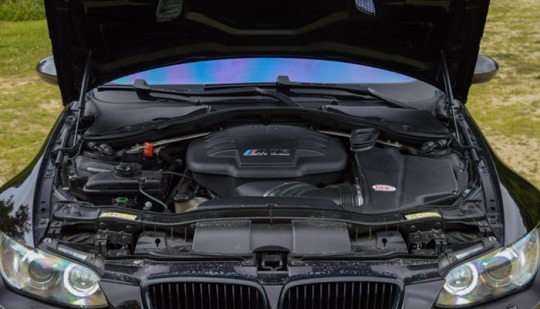
An interesting fact about the internal combustion engine is that it burns the air-fuel mixture to generate mechanical torque. But, but, but… there is a limit to how much heat an engine can tolerate and there is a whole set of mechanism in place to keep the engine temperature contained. If the heat output exceeds that range, the engine will enter the phase of "overheating".
Driving a vehicle with an overheated engine can prove dangerous. How dangerous, you asked??? The discussion below will give you an idea of the dangers associated with driving a vehicle with an overheated engine.
Risks of Driving a Car with Overheated Engine
Risk #1- Blown head gasket
Positioned between the engine block and cylinder head; the head gasket plays a crucial role in maintaining appropriate compression inside the combustion chamber. Plus, it makes sure that coolant and oil are not leaking out of their designated paths. It is made of thin layers of steel interlaced with elastomer. If you keep driving your BMW when its engine temperature reaches extreme limits, the first component that will be affected is the head gasket.
Risk #2- Fractured hoses
Another problem that you will encounter if you keep on driving with an overheated engine is busted hoses. There are hoses connecting the engine to the radiator to facilitate coolant circulation. When the engine temperature rises beyond the normal operating range, the coolant will boil and expand. As coolant expands, pressure inside the cooling system will rise; as a result, the hoses responsible for facilitating coolant circulation will bust.
Risk #3- Warped cylinder head
In addition to covering the upper portion of the combustion chamber, the cylinder head is home to key components such as fuel injectors, valves, etc. If for some reason the engine overheats and it is not taken care of quickly, the cylinder head can get damaged. And guess what??? Repairing a warped cylinder head is very expensive. So, if you don't want to spend a lump sum of money on your BMW engine repair, you must look after the engine. And if you notice an unusual engine temperature rise, you must act quickly.
Risk #4- Cracked engine block
Another important part that can get damaged if you keep driving with an overheated engine is the engine block. It’s the engine block that contains the cylinders and other crucial parts. A crack in such a crucial part can contribute to expensive repairs.
So, What Should You Do If Your Car Engine Overheats?
It is not safe to drive an overheated car… as you may end up with expensive repairs. So, if your BMW has been issuing engine overheating warnings recently, you should not take it lightly. Listed below are a few steps you should follow if your car engine starts overheating;
#1- Pull over immediately. As soon as you notice signs of engine overheating in your BMW, pull over right away. Because continuing to drive will only damage the engine and nothing else.
#2- Keep an eye on coolant. If you don't want your BMW to overheat in the middle of nowhere, you must look after its cooling system. Check if there is enough coolant available in the system. If the coolant is leaking, find out and fix the crack at the earliest possible time.
#3- Look after the radiator. Radiator clogging has been found to be a major reason behind engine overheating in cars. It is therefore crucial that you check your BMW's radiator from time to time and if you notice a trace of damage or clogging, reach out to the nearest auto service center to get the issue resolved.
#4- Routine engine tune-up. Skipping engine servicing is another major cause of overheating. Therefore it is important that you follow your engine servicing schedule. Also, keep an eye on the motor oil level and quality.
Summary
Truth be told… It is never safe to drive an overheated car. There are many different things that can contribute to engine overheating in a vehicle; ranging from low coolant to declined motor oil level. In any case, if your BMW engine temperature is rising at an alarming rate, reach out to a reputed German car service center to get the issue diagnosed.
0 notes
Text
Navigating Auto Repair in Vancouver: A Comprehensive Guide

When it comes to auto repair, Vancouver, British Columbia, offers a myriad of options for vehicle owners. Whether you're a lifelong resident or just passing through, understanding the local auto repair landscape is essential to ensure that your car stays in top shape. In this guide, we'll explore the world of auto repair in Vancouver, covering everything from common car issues to the best repair shops in the area.
Common Auto Issues in Vancouver
Vancouver's unique climate, with its mix of rain, snow, and mild temperatures, presents a specific set of challenges for vehicles. Some of the most common issues faced by car owners in the city include:
1.1. Rust and Corrosion: The wet climate can lead to accelerated rust and corrosion on vehicles, particularly on the undercarriage. Regular maintenance and rust-proofing can help prevent this issue.
1.2. Brake Problems: Constant use of brakes due to the city's hilly terrain can result in frequent brake issues. Worn-out brake pads and rotors are common problems that require timely attention.
1.3. Battery Troubles: Cold winters can drain car batteries quickly. A weakened battery can leave you stranded, especially on a chilly morning.
1.4. Tires and Alignment: The city's varying road conditions, from smooth highways to potholed streets, can affect tire wear and alignment. Regular tire maintenance is crucial.
1.5. Engine Overheating: Vancouver's occasional hot spells can cause engines to overheat. Cooling system maintenance and keeping an eye on the coolant level are essential.
Choosing the Right Auto Repair Shop
Finding the right auto repair shop in Vancouver is crucial to ensuring your vehicle is in capable hands. Here are some steps to help you make an informed decision:
2.1. Research: Start by doing your research. Look for reviews and recommendations online and ask friends and family for their experiences with local repair shops.
2.2. Certified Technicians: Ensure the technicians are certified and have the necessary qualifications. This indicates their expertise and commitment to quality service.
2.3. Licensing and Insurance: Make sure the repair shop is licensed and insured. This protects you in case of any unforeseen circumstances.
2.4. Shop Specialization: Consider the specialization of the shop. Some may focus on certain types of vehicles or specific repair services. Choose a shop that aligns with your needs.
2.5. Warranty: Inquire about the warranty offered on repairs. Reputable shops stand by their work and provide warranties as a guarantee of quality.
2.6. Transparent Pricing: Request a written estimate for the repair work. Ensure the pricing is transparent and includes labor, parts, and any additional fees.
Prominent Auto Repair Shops in Vancouver
Now, let's take a look at some of the top auto repair shops in Vancouver known for their exceptional service and reliability:
3.1. Minit-Tune & Brake Auto Centres: With multiple locations across Vancouver, Minit-Tune & Brake Auto Centres are well-regarded for their comprehensive range of automotive services. They offer everything from oil changes to brake repairs and have a strong reputation for transparency and quality.
3.2. Pacific Motorsports: If you own a German-made vehicle, Pacific Motorsports specializes in the repair and maintenance of BMW, Audi, and Volkswagen cars. Their certified technicians are experts in dealing with these high-end automobiles.
3.3. BCAA Auto Service Centre: As an extension of the British Columbia Automobile Association (BCAA), these service centers offer a range of automotive services with a focus on quality and trustworthiness.
3.4. T & T Honda: If you're a Honda owner, T & T Honda is one of the go-to places for Honda maintenance and repairs in Vancouver. Their technicians are well-trained in working with Honda vehicles.
3.5. Sargent Auto: Sargent Auto is a family-owned and operated auto repair shop that has been serving Vancouver for over 30 years. Their personalized service and commitment to customer satisfaction make them a standout option.
DIY Auto Repair in Vancouver
While having a trusted auto repair shop is important, many vehicle owners in Vancouver also prefer to take a hands-on approach to car maintenance. If you're a DIY enthusiast, there are several options available in the city:
4.1. Self-Service Garages: Vancouver offers self-service garages where you can rent a bay, lift, and tools to perform your own repairs and maintenance. Some popular options include The Shop Vancouver and The Hackery.
4.2. Auto Parts Stores: There are numerous auto parts stores in Vancouver where you can purchase replacement parts and tools. Some popular ones include Lordco Auto Parts, NAPA Auto Parts, and Canadian Tire.
4.3. Workshops and Classes: Consider attending workshops or classes on auto repair and maintenance. Many organizations in Vancouver offer hands-on courses to help you become more proficient in DIY auto repair.
Environmental Considerations
Vancouver is known for its commitment to environmental sustainability. When choosing an auto repair shop, you might want to consider their eco-friendliness. Some shops in the city take extra measures to minimize their environmental impact by recycling oil, using energy-efficient equipment, and implementing other green practices.
Conclusion
Auto repair in Vancouver is a diverse and dynamic field, offering solutions for every type of vehicle owner, from those who prefer full-service maintenance to enthusiastic DIYers. By understanding the common issues faced by car owners in Vancouver, knowing how to choose the right auto repair shop, and being aware of environmentally friendly options, you can ensure your vehicle remains in excellent condition while supporting the local auto repair industry. So, whether you're a Vancouver resident or just passing through, you can drive with confidence in this beautiful city.
0 notes
Text
How Far Can You Go While The BMW Coolant Light Comes On?
The coolant light on a BMW engine is crucial for maintaining internal temperature. When the BMW coolant light comes on, how far can you go?
You must know how to check coolant levels in a new or old car. On highways, don’t overheat the engine. The coolant light on the car may indicate a low level and arouse concerns. If coolant is low, stop driving. The problem may require coolant refilling or professional assistance.

BMW coolant light comes on
Why Are You Getting The Check BMW Coolant Light Comes On?
The same causes as a BMW may give you the “Check Coolant Level” alert on your BMW. Most prevalent reasons:
Low coolant. This causes the warning message most often. A blown head gasket, evaporation, or leakage may lower coolant levels.
A coolant leak. Coolant might leak from the radiator, hoses, water pump, or thermostat.
Bad coolant sensor. The dashboard receives coolant level signals from the coolant sensor. Defective sensors may falsely indicate low coolant.
Overheating. When the engine overheats, coolant levels drop. Engine temperatures increase coolant evaporation.
If the “Check Coolant Level” warning light comes on, you should check the coolant level right away.
What To Do When The BMW Coolant Light Comes On
How do I reset the low coolant light? When the BMW coolant light turns on, engine coolant is low. This may cause engine overheating and damage. How to Reset the BMW Coolant Light
Steps to take when the BMW coolant light turns on:
Stop and turn off the car. This may avoid additional harm if an underlying condition leads to a more severe issue. Continuing to drive with low coolant is a safety hazard.
Check your coolant once the engine cools. Wait for your car to cool before removing the radiator cap to eliminate burn concerns. It takes 30 minutes for most engines to cool. If your level is really low, your light may illuminate.

BMW coolant light comes on
BMW Coolant Light On/Off
BMWs with sudden coolant light on/off changes may have issues outside the cooling system.
Your cooling system may be to blame for this confusing situation. If the cause is unknown, consult a specialist. Your BMW cooling system is needed to complete this task.
How Long Can You Drive With Low Coolant?
You may have low coolant but be above the required level. Depending on your journey duration, you can drive your vehicle for a few days, but fill it up ASAP.
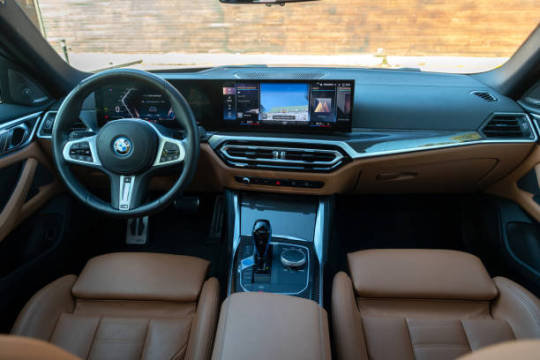
BMW coolant light comes on
How Do I Add Coolant To A BMW?
BMW coolant light comes on? First Park your BMW on flat ground and let the engine cool to check the coolant level. If you open the hood, you’ll see the coolant tank. Slowly rotate the cap counterclockwise to release system pressure. Check the coolant level without the cap.
The reservoir side “MIN” and “MAX” markers should have coolant. Add coolant to the “MAX” mark if it’s low. Replace and tighten the cap clockwise.
What Should I Check Before Refilling The Coolant?
Make sure the engine is cool before refilling the coolant, and avoid opening the reservoir cap when it is hot because the coolant is under pressure and can burn.
Look for the clear coolant reservoir with a temperature gauge.
Place the coolant between “full” and “low”. Find the coolant type in the owner’s handbook.
Mix equal amounts of coolant and distilled water. Since coolant is hazardous, use a funnel to minimize spillage and overfilling of the reservoir.
Refill the coolant after evaluating these criteria. Before replacing coolant, cool the engine and avoid opening the reservoir cap while it is hot.
Check the coolant reservoir level, identify the type, prepare the coolant, use a funnel to avoid spills, and don’t overfill.
Check the owner’s handbook for coolant types. Follow these instructions for a safe and effective coolant refill.
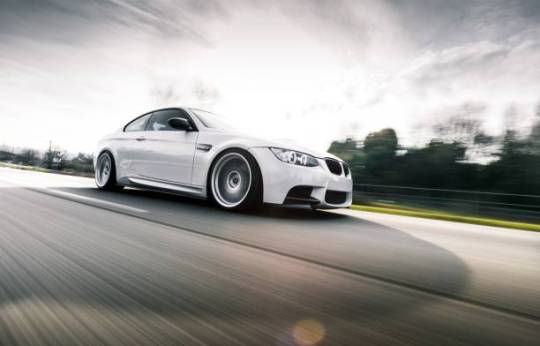
BMW coolant light comes on
Can I Add Water To The Coolant?
When filling up coolant, do not add water unless instructed on the bottle. For Mercedes-Benz coolant, combine water and antifreeze 1:1. The antifreeze is mainly ethylene glycol. That keeps hoses and reservoir tanks from freezing. In areas without freezing temperatures, water may be used, but it is not recommended.
What To Do When Coolant Light On But Coolant Is Full?
BMW coolant light comes on
How Often Should You Change BMW Coolant?
Coolants have a finite lifespan, similar to that of motor oil. Effective cooling requires flushing and replacing the system’s coolant. But how frequently should a Mercedes-Benz do that?
BMW recommends replacing coolant every 30,000 miles, or two years. Due to dirt and silt in the coolant. It loses cooling efficiency with time. To keep the coolant debris-free and within the acceptable range, check it every 1,500 miles.

0 notes
Text
Understanding BMW Problems: A Comprehensive Guide
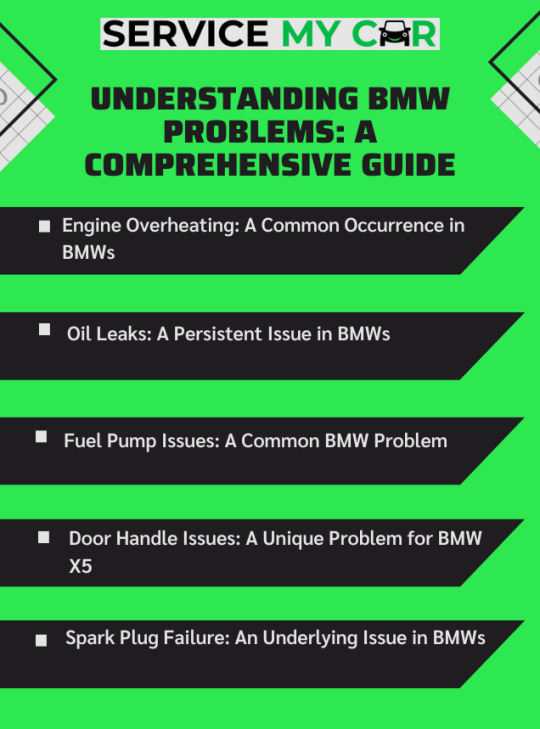
BMW, an acronym for Bayerische Motoren Werke AG, is a revered name in the automotive industry, known for its luxurious vehicles that combine elegance, comfort, and high performance. However, like any other car manufacturer, BMWs are not devoid of mechanical issues. This in-depth guide will dive into various BMW problems you might encounter, the models often affected, and how to address these issues to ensure your car's longevity and reliability.
1. Engine Overheating: A Common Occurrence in BMWs
One of the most frequently reported BMW problems is engine overheating, which can occur in various models, from the sporty BMW M3 to the luxurious BMW X5. It can manifest as a sudden rise in the temperature gauge, steam from the hood, or even an activated check engine light. This issue can be attributed to various factors such as a malfunctioning cooling system, a leaky radiator, or a worn-out water pump.
Cooling System Failure
The cooling system, responsible for regulating the engine's temperature, is a critical BMW component that can cause problems. This system's malfunction is a common BMW issue. The cooling system comprises several parts, such as the water pump and thermostat, which are prone to wear and tear. Regular servicing can help identify potential issues early and prevent costly repairs.
Water Pump Malfunctions
Water pump failure, a specific case within the cooling system, is a frequent concern for BMW owners. The water pump circulates coolant through the engine, preventing overheating. However, these pumps, especially in BMWs, are known for their high failure rate, which can lead to engine overheating if not addressed promptly.
Thermostat Problems
Another culprit for overheating issues in BMWs is a faulty thermostat. This component controls the flow of coolant based on the engine's temperature. A malfunctioning thermostat might fail to open as the engine heats up, preventing the cooling system from operating efficiently and causing the engine to overheat.
2. Oil Leaks: A Persistent Issue in BMWs

Oil leaks are another prevalent issue in BMWs, often leading to brown spots underneath the vehicle. Two common sources of oil leaks in BMWs are brittle valve cover gaskets and leaky oil filter gaskets.
In case you own a BMW car, and you are looking for an oil change then we would like to recommend ServiceMyCar, the best and trusted bmw service dubai center to change engine oil for your BMW car.
Brittle Valve Cover Gaskets
BMW engines are often plagued by oil leaks due to brittle valve cover gaskets. Over time, these gaskets, which are made from plastic or cork, can become brittle and develop cracks.
This can lead to oil leaks that, if ignored, can cause engine damage due to reduced lubrication.
Leaky Oil Filter Gaskets
Oil filter gaskets are another common source of oil leaks in BMWs. These gaskets, made from rubber, are located near various engine parts that require lubrication. Over time, accumulated grease and dirt can lead to gasket failure, causing an oil leak. Regular maintenance can help identify and fix this issue before it escalates.
3. Transmission Problems: A Significant Concern for BMW Owners

Transmission problems are a significant concern in BMWs, often manifesting as difficulty in gear shifting or the transmission slipping between gears. Certain models, such as the 2011 BMW X5, are particularly prone to these issues. Regular maintenance and inspections can help identify and address these problems before they escalate.
4. Fuel Pump Issues: A Common BMW Problem
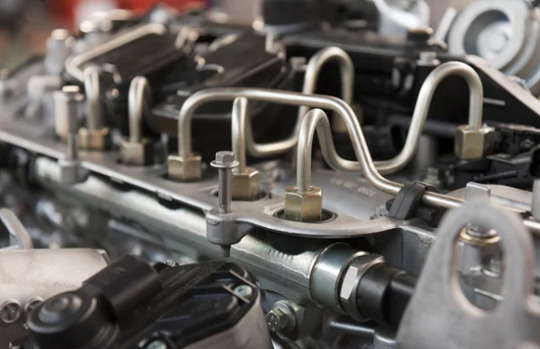
Fuel pump issues are a well-known BMW problem, often resulting in poor acceleration, engine stuttering at high speeds, or the engine refusing to start. BMW engines have two fuel pumps – a low-pressure pump that extracts gasoline from the tank, and a high-pressure pump that pushes the fuel into the combustion chamber. If the high-pressure pump malfunctions, it can lead to various engine issues.
5. Faulty Electronic Systems: An Achilles Heel for BMWs

BMW cars are equipped with advanced electronic systems that, unfortunately, are prone to malfunctions. Owners have reported issues with automatic headlights, electronic window systems, and central locking mechanisms. A BMW's electronic system issues can range from minor inconveniences, such as a stuck turn signal, to significant concerns like electrical malfunctions leading to a vehicle recall.
Automatic Headlight Issues
Automatic headlights, while convenient, can cause issues in some BMW models. These headlights sometimes remain on when not needed, draining the car's battery and potentially leading to other electronic problems.
Electric Window Malfunctions
Electric window malfunctions are a common issue in BMW models. The motor that operates the windows can fail, preventing the windows from fully closing. This can pose a security risk, as it leaves the vehicle vulnerable to theft.
Central Locking Mechanism Failure
Faulty central locking mechanisms can also pose a problem for BMW owners. This issue can prevent the car from being locked or unlocked remotely, causing inconvenience and potential security concerns.
6. Alloy Wheel Corrosion: Aesthetic and Performance Concern
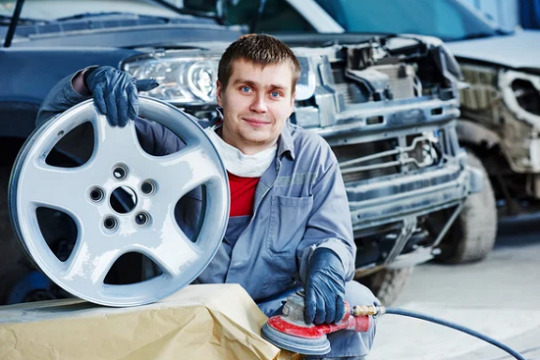
Corrosion of alloy wheels is a common issue in BMWs, affecting both the vehicle's aesthetics and performance. Corroded alloys can affect the wheels and the tires, reducing the car's overall performance. While there is no solution to fix the corrosion, regular maintenance and avoiding high-pressure water sources can help prevent the issue.
7. Door Handle Issues: A Unique Problem for BMW X5
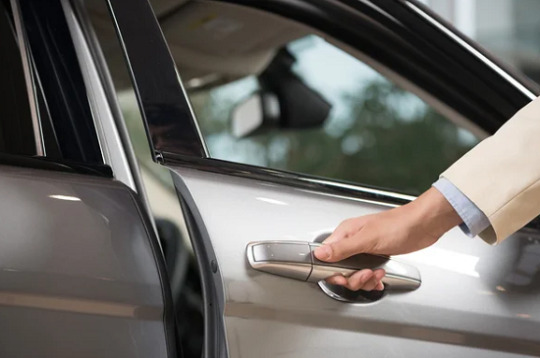
Owners of the BMW X5 model have reported issues with door handles. The door handles can physically operate as expected, but without unlocking and opening the door. This issue often requires a complete replacement of the door's locking mechanism.
8. Failing Electric Windows: A Potential Security Concern
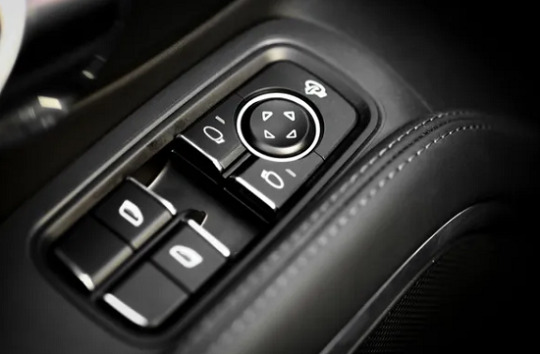
Electric window failure is another frequent issue in BMWs. The motor that operates the windows can give out, preventing the windows from closing fully. This not only affects comfort but also poses a security risk, as it makes the vehicle vulnerable to theft.
9. Heater Core and Coolant System Issues: A Comfort Concern

Some BMW owners have reported problems with the vehicle's coolant system and heater core. These issues can lead to the car overheating or not producing enough heat, negatively affecting the comfort inside the vehicle.
10. Spark Plug Failure: An Underlying Issue in BMWs
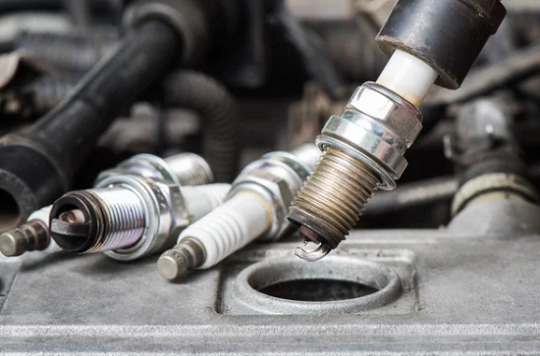
Spark plug failure is a common issue in BMWs. These vital components are responsible for creating the spark that ignites the fuel in the engine. If the spark plugs wear out faster than usual, it can lead to a loss of power and acceleration, or even engine failure.
Conclusion
While BMW vehicles are high-performance luxury cars, they are not immune to mechanical issues. Recognizing these common BMW problems and addressing them promptly can ensure the longevity and reliability of your vehicle. Regular maintenance and inspections can help identify potential issues before they escalate, saving you from costly repairs down the line. If your BMW is showing any signs of these common problems, it's advisable to have it inspected by a professional technician immediately.
Remember, a well-maintained BMW is not only a joy to drive but also a symbol of elegance and reliability. Enjoy your BMW to its fullest by keeping it in top condition and addressing any problems promptly. After all, prevention is better than cure, especially when it’s about maintaining your cherished BMW.
0 notes